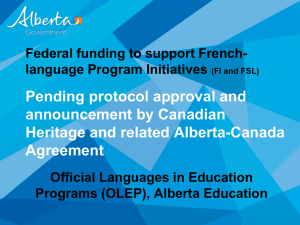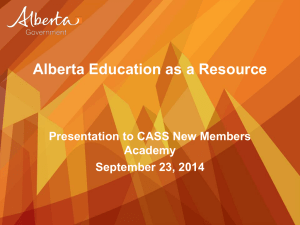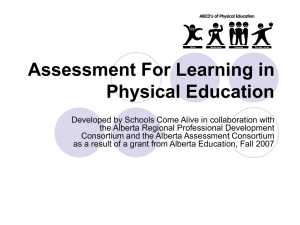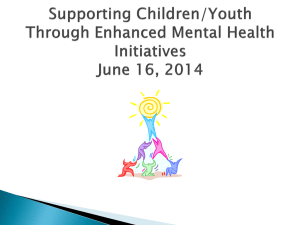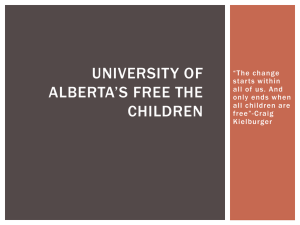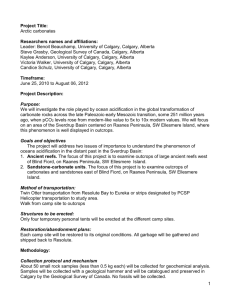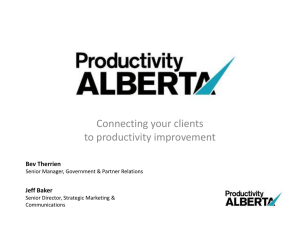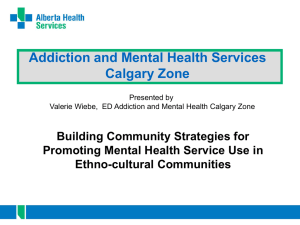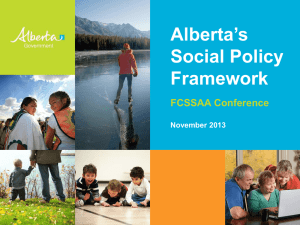Norma Ruecker - Canada Foundation for Innovation
advertisement
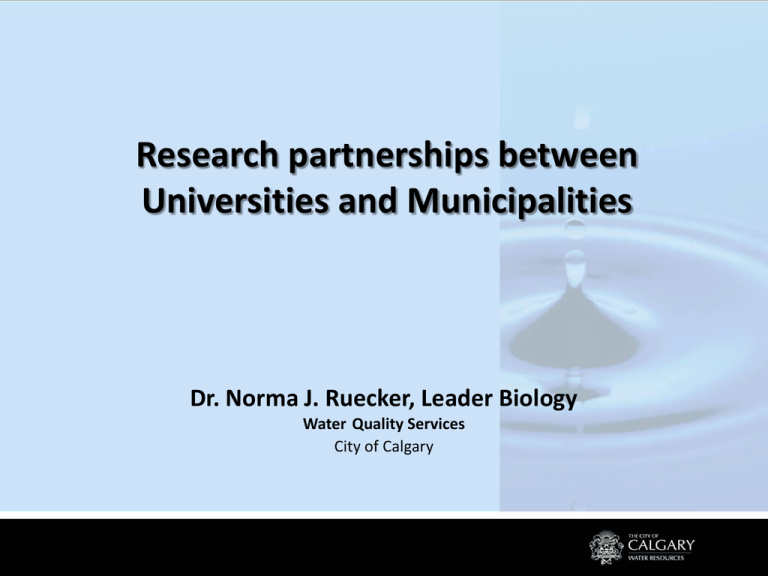
Research partnerships between Universities and Municipalities Dr. Norma J. Ruecker, Leader Biology Water Quality Services City of Calgary Why should water utilities be involved in research? • • • • • Find solutions to problems Decision making based on sound science Fill knowledge gaps Advance industry best practices Evidence for needed policy change Research and Development Strategy • Research and Development Strategy (R&DS) provides research solutions to operational challenges in support of business goals through leveraging its strategic partnerships • Water Resources and Water Services strategically strengthen links with partners to remain an industry leader and ensure safe and sustainable water quality and quantity, protection of the environment and address emerging issues that may impact our citizens, customers and operations Goals for Research and Development • • • • • • Better align research efforts with strategic business goals, priorities and risks Provide a framework for research management and governance Ensure we are good custodians of the public money invested in research Leverage available resources, funding, and strengthen links to the research community Create professional development opportunities for staff Measure and share the results Priority areas for Research and Development Water • Quantitative Microbial Risk Assessment; Operational performance; Source water protection, monitoring; Glenmore reservoir – predictive modeling; Water quantity and availability; Distribution system research; Asset/Energy Management Wastewater • Emerging substances of concern; Effluent re-use; Resource recovery; Optimizing treatment and capacity; Dissolved oxygen impacts ; Biosolids Stormwater • Performance of SCPs, ponds, Shepard wetland; Prevention/cause of nuisance ecology in ponds; Test assumptions in stormwater design and total loadings; Sediment characterization & movement in the Storm system; Nutrient management with vegetation in LID; Stormwater reuse health impacts; Local climate change impacts Priority areas for Research and Development Microbiology Water • Quantitative Microbial Risk Assessment; Operational performance; Source water protection, monitoring Wastewater • Effluent re-use; Optimizing treatment and capacity; Biosolids Stormwater • Performance of SCPs, ponds, Shepard wetland; Prevention/cause of nuisance ecology in ponds; Stormwater reuse health impacts Decision making supported by accurate risk assessment • 2013 Health Canada release a new guidance document of enteric protozoa which included risk assessment (QMRA) as part of multi-barrier approach to drinking water treatment • Collaborative project between Water Quality Services and University of Alberta to source track Cryptosporidium and Giardia for more accurate risk assessment 1.00E-05 Provides valuable information on the need and timing of future UV disinfection upgrades and WTPs Health Canada DALY target 1.00E-06 DALY Risk • 100 % infective 10% infective 1.00E-07 • Data supports a decision to defer at this time 1.00E-08 2009 2010 2011 2012 2013 Identification of potential sewer/storm cross connections • Storm water is managed through a network storage and/or outfalls to rivers and is completely isolated from the sewer system • Total Loading Management initiatives have lead to considering alternative uses for storm water (i.e. irrigation) which can pose increased public health risks if contaminated with human sewage • Traditional microbiological indicators (E. coli) are not adequate for identification of human sewage (i.e. cross connections) • Collaboration with University of Alberta to track the presence of human fecal markers (Bacteroides) in a number of storm ponds and storm outfalls 100000 10000 1000 100 10 1 E. coli Bacteroides Expanding wastewater reuse in Alberta through application of a QMRA framework Goals: • Examine human pathogen removal through WWT processes to determine fit-forpurpose reuse options • Unite academic researchers, industry and policy makers to address several knowledge gaps related to characterizing pathogen reduction across wastewater processes in cold climates and the potential public health risks posed by wastewater reuse For the purpose of: • Laying the foundation for a science-based, sustainable, health-related water reuse regulatory framework in Alberta. Examples of collaborations lead by academic scientists Project Institution Primary Funding Agency Optimizing Drinking Water Treatment in Response to Variable Source water quality University of Waterloo and University of Alberta Natural Sciences and Engineering Research Council Decision making system for Wastewater plant upgrades University of Calgary City of Calgary Main breaks: Current Knowledge and Research Roadmap Arizona State University and Battelle Memorial Institute Water Research Foundation Water demand forecasting Brock University Canadian Water Network Sources of nitrosamine precursors Arizona State University and University of Toronto Water Research Foundation Advanced Approaches to dealing with water treatment Disinfection by-products University of Alberta Alberta Innovates Water and Electric Utility Integrated Planning Simon Fraser University Water Research Foundation Utility Risk Management Methodologies for Buried Assets with Improved TBL Understanding of Pipe Failure Virginia Tech Water Research Foundation Sustainable Urban Water Management in the Context of Climate Variability and Change University of Regina Alberta Innovates and Mitacs Emerging substances of concern in Municipal biosolids Ryerson University, Trent University, University of Waterloo and University Guelph Canadian Water Network Microbial fuel cell University of Calgary Urban Alliance Benefits of collaborating with academic partners • • • • Subject Matter Expertise Knowledge transfer R&D generates professional development for employees Recruitment opportunities for University Graduates • Leveraging of investments - - Many collaborations are based on In-kind contributions (data and sample collection) In 2014, approximately $200,000 directed to research initiatives, total estimated that value of initiatives are over $1,000,000 (5:1) Other organizations provide various forms of support for research (NSERC, WRF, WERF, CWN, ACWA, UA, CFI) Many agencies rate projects more highly when industry partners are included

